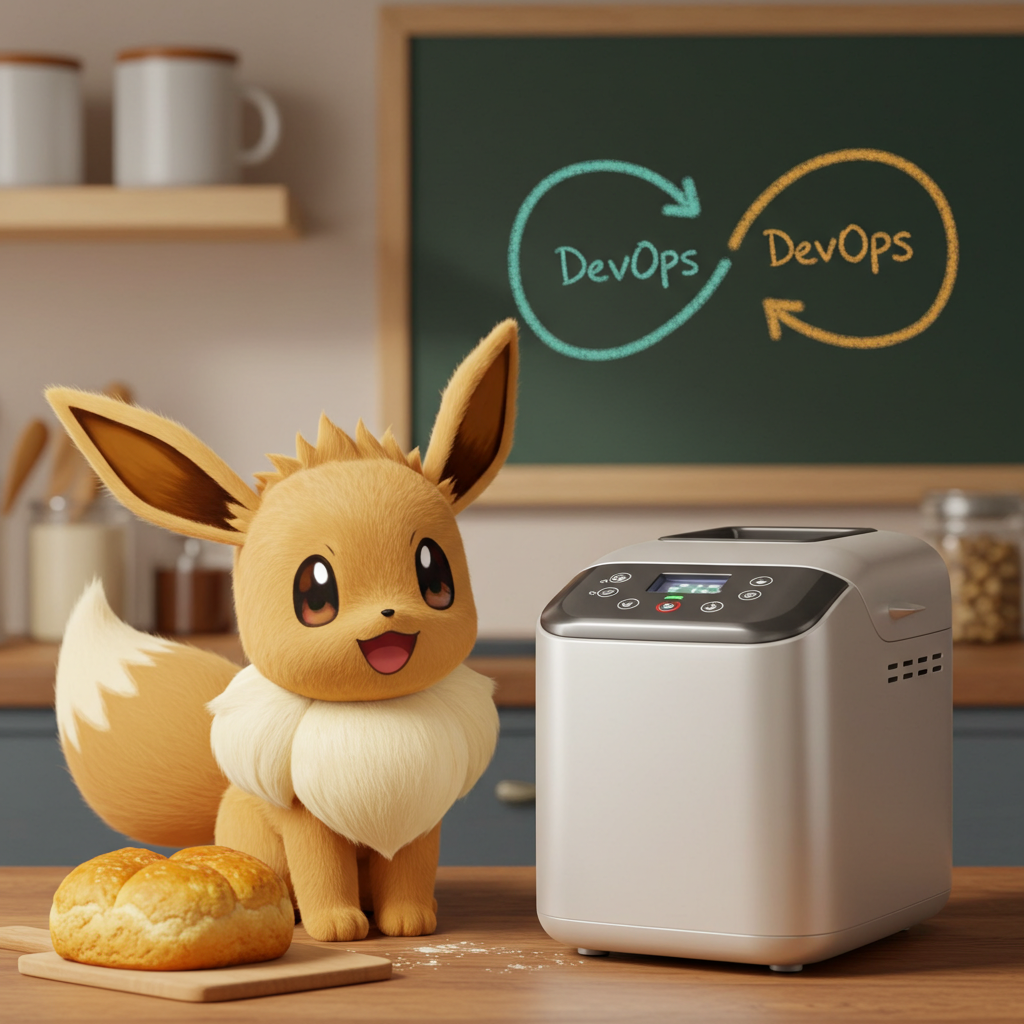
DevOps is like a bread maker 🍞🐱🏍 it takes a variety of inputs, processes them, and produces a final product with minimal manual intervention. Just like how you add ingredients to a bread maker (flour, yeast, sugar, etc. 🍰), DevOps involves providing code, infrastructure, and automation to produce a continuous flow of delivery. Let’s break down the 3 fundamentals of DevOps and explore some best practices using the bread maker analogy!
1. Continuous Integration (CI) 🍚 - Kneading the Dough
In the bread-making process, kneading is an essential step to blend all the ingredients together into a smooth dough. In DevOps, Continuous Integration (CI) is the act of frequently integrating code changes into a repository.
Key Concepts:
- Automated Build: Just like the bread maker automatically kneads the dough, CI automates the process of integrating code and building it. Every time a developer pushes code to the repository, an automated build process runs to ensure the code integrates correctly ✅
- Test Automation: After kneading the dough, you would test it to ensure it’s consistent. Similarly, in CI, automated tests run after every integration to catch bugs early 🐛
Best Practices:
- Commit frequently in small batches!
- Automate tests to verify that everything is working!
- Use version control systems like Git to track and manage changes 😎
2. Continuous Delivery (CD) 🍽️ - Baking the Bread
Now that the dough is ready, it’s time to put it in the oven. This is similar to Continuous Delivery (CD) in DevOps, where after CI, the code is automatically deployed to production or staging environments.
Key Concepts:
- Automated Deployment: Just as the bread maker handles the baking process without your intervention, CD ensures the code is automatically deployed to your environment, ready for users to enjoy.
- Zero Downtime: The process should be smooth and seamless. Just like a good loaf of bread, there shouldn’t be any interruptions in the baking process. In DevOps, the goal is to deploy changes with minimal downtime.
Best Practices:
- Use automated pipelines to deploy code safely and efficiently!
- Implement monitoring and rollback strategies to handle any deployment issues!
- Ensure that environments (like production and staging) are as similar as possible 🎉
3. Continuous Monitoring 🔍 - Enjoying the Freshly Baked Bread
Once the bread is out of the oven, you don’t just eat it right away — you pay attention to its texture, smell, and taste to make sure it’s baked properly. Similarly, Continuous Monitoring in DevOps ensures that once your software is deployed, its performance and reliability are constantly checked.
Key Concepts:
- Real-time Monitoring: Just as you keep an eye on your bread as it bakes, continuous monitoring helps you track how your software is performing in real time, identifying any issues before they become critical.
- Logging and Alerts: If the bread maker starts to make strange noises, you’d want to know immediately. In the same way, logging and alerting systems help DevOps teams detect and resolve issues quickly.
Best Practices:
- Implement monitoring tools like Prometheus, Grafana, or New Relic.
- Collect logs from different systems and analyse them for potential issues 📈
- Set up alerts to notify the team when something goes wrong 🚦
Conclusion: From Ingredients to a Yummy Loaf 🍞✨
Just as a bread maker takes a few basic ingredients and turns them into a yummy loaf with little manual work, DevOps takes your code, automates the process of integration, delivery, and monitoring, and turns it into a great software product.
By following the three fundamental pillars of DevOps — Continuous Integration, Continuous Delivery, and Continuous Monitoring — teams can create high quality software in an automated, consistent, and reliable way 😊🍞